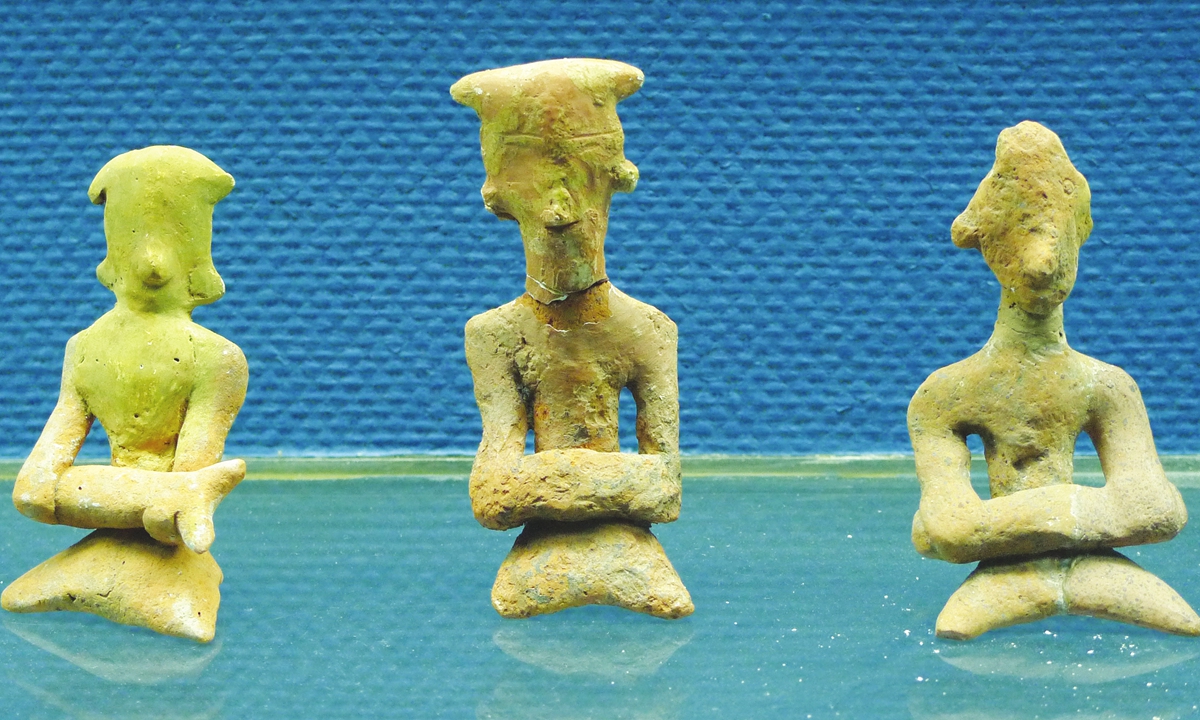ARTS / CULTURE & LEISURE
Chinese roots

Pottery figurines from the Shijiahe Ruins Photo: IC
Shijiahe Ruins: Jade head reveals social hierarchy of prehistoric cultureLocated in Shihe township in Central China's Hubei Province, the Shijiahe Ruins are the center of the largest and longest prehistoric culture discovered by archaeologists in the middle and lower reaches of Yangtze River in southern China.
Dating back to between 5,900 and 3,800 years ago, the ruins played an indispensable role during a period of time when Chinese civilization was just coming into being.
The Shijiahe Ruins were first excavated in the 1950s, followed by two major excavations in the 1980s and more recent breakthroughs from 2014 to 2019 by archaeologists from the Archaeology Research Institution of Hubei Museum and Peking University.
The ruins cover a total area of over eight square kilometers.
The core city among the ruins, named Qujialing, covers 1.2 square kilometers.
At the core city, experts found traces of an ancient moat, a building for sacrifices and other buildings that were essential for an ancient mature city.
Under sediment built up over thousands of years, experts also found a large number of fragments of pottery jars and cups as well as some human bones.
At the southwestern corner of the Shijiahe Ruins, tens of thousands of red pottery cups were discovered, along with the traces of mud-washing pools and kilns that were once used for making pottery.
Archaeologists also discovered tombs containing massive amount of peculiar jade artifacts.
Experts believe that different jade statues were buried with the deceased according to their social standing.
For example, in the tomb with the highest level of burial objects, a jade head of a man was found. In addition, jades shaped like auspicious animals such as tigers and cicadas were also found in other tombs.
The Shijiahe Ruins are divided into three parts: a city, a sacrificial area and a special workshop for pottery production.
Additionally, the discovery of exquisite jade artifacts shows that the Shijiahe culture had a well-developed handicraft industry, while the jade shaped like a man's head also shows the Yangtze River region's increased communication with the Central Plains of China.
Global Times

